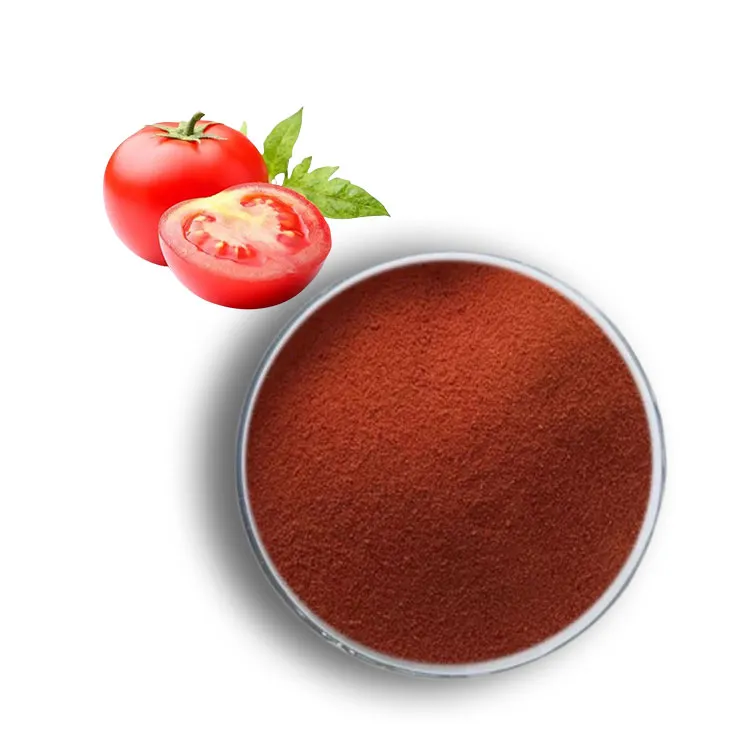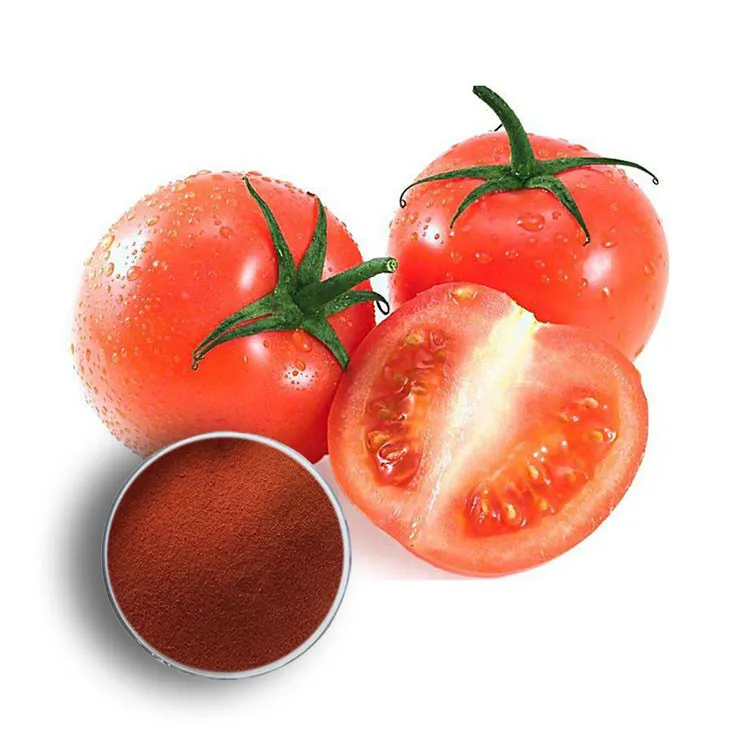- 0086-571-85302990
- sales@greenskybio.com
Lycopene extraction technology and production process.
2024-11-29

1. Introduction
Lycopene is a natural pigment that imparts the red color to tomatoes. It has received significant attention in recent years due to its strong antioxidant properties. These antioxidant properties make Lycopene highly valuable in various industries, including nutraceuticals, food, and cosmetics. The extraction technology and production process of Lycopene are crucial for obtaining high - quality lycopene products for both commercial and health - related applications.

2. Lycopene Extraction Technologies
2.1 Solvent - based Extraction
- Solvent - based extraction is one of the traditional methods for lycopene extraction. Commonly used solvents include hexane, ethyl acetate, and acetone.
- This method works by dissolving lycopene from the tomato matrix into the solvent. However, it has several drawbacks.
- The major problem is the potential toxicity due to solvent remnants in the final product. These remnants can pose health risks to consumers, especially when the lycopene is used in food or nutraceutical products.
- Moreover, the extraction process using solvents may require complex purification steps to remove the solvents completely, which can increase the production cost.
2.2 Supercritical Fluid Extraction (SFE)
- Supercritical fluid extraction (SFE), especially with supercritical CO2, has emerged as a promising alternative for lycopene extraction.
- Supercritical CO2 has properties that are intermediate between a gas and a liquid at its supercritical state. It can penetrate the tomato tissue effectively and dissolve lycopene.
- One of the main advantages of SFE is that it can achieve high - purity lycopene extraction without leaving harmful residues. This makes the extracted lycopene suitable for use in a wide range of applications, including in the food and nutraceutical industries where purity and safety are of utmost importance.
- Another benefit is that SFE can be controlled more precisely compared to solvent - based extraction. Parameters such as pressure, temperature, and flow rate can be adjusted to optimize the extraction process and obtain the desired yield and quality of lycopene.
2.3 Ultrasonic - Assisted Extraction
- Ultrasonic - assisted extraction is another innovative method for lycopene extraction.
- It utilizes ultrasonic waves to disrupt the tomato tissue. The ultrasonic waves create cavitation bubbles in the extraction medium, which implode and generate high - intensity shock waves and micro - jets.
- These physical effects can enhance the mass transfer of lycopene from the tomato cells to the extraction solvent, thereby increasing the extraction efficiency.
- Compared to traditional extraction methods, ultrasonic - assisted extraction can reduce the extraction time and may also require less solvent, which is beneficial from both an economic and an environmental perspective.

3. Lycopene Production Process
3.1 Tomato Collection
- The production process of lycopene starts with tomato collection. The quality of tomatoes used is a critical factor that affects the final product.
- Tomatoes should be selected based on their ripeness, variety, and overall quality. Ripe tomatoes generally contain higher levels of lycopene compared to unripe ones.
- Different tomato varieties may also have varying lycopene contents. For example, some heirloom varieties are known to be rich in lycopene.
- It is also important to ensure that the tomatoes are free from contaminants such as pesticides, heavy metals, and microbial pathogens, as these can affect the purity and safety of the extracted lycopene.
3.2 Pre - treatment
- After tomato collection, pre - treatment is necessary before extraction. One common pre - treatment step is sieving.
- Sieving helps to remove any large particles, debris, or damaged tomatoes from the batch. This ensures a more uniform starting material for the extraction process.
- Other pre - treatment steps may include washing the tomatoes to remove surface dirt and contaminants, and perhaps blanching to inactivate enzymes that could potentially degrade lycopene during the extraction process.
3.3 Extraction
- Once the pre - treatment is completed, the actual extraction of lycopene takes place. Depending on the extraction method chosen (such as solvent - based, supercritical fluid, or ultrasonic - assisted extraction), the process will vary.
- In solvent - based extraction, the tomatoes are typically immersed in the solvent, and the mixture is agitated to facilitate the dissolution of lycopene. This may be carried out at a specific temperature and for a certain period of time to optimize the extraction yield.
- For supercritical fluid extraction, the tomatoes are placed in a high - pressure vessel, and supercritical CO2 is passed through the sample at controlled pressure and temperature conditions. The lycopene is then separated from the CO2 stream at the end of the extraction process.
- In ultrasonic - assisted extraction, the tomatoes are combined with the extraction solvent, and ultrasonic waves are applied for a set duration. The extraction efficiency is monitored during this process to ensure that an optimal amount of lycopene is extracted.
3.4 Purification
- After extraction, purification is essential to obtain pure lycopene. In solvent - based extraction, purification steps are mainly focused on removing the solvent residues.
- This may involve techniques such as evaporation under reduced pressure, distillation, or chromatography. For example, rotary evaporation can be used to remove the solvent under vacuum, followed by further purification using column chromatography if a very high purity is required.
- In supercritical fluid extraction, although the process generally results in a relatively pure product, some minor impurities may still need to be removed. This can be achieved through filtration or other separation techniques.
- Ultrasonic - assisted extraction may also require purification steps similar to solvent - based extraction, depending on the nature of the extraction solvent used and the desired purity of the lycopene product.

4. Applications of Lycopene
4.1 Nutraceutical Sector
- In the nutraceutical sector, lycopene is widely used in dietary supplements due to its antioxidant properties.
- Antioxidants are important for neutralizing free radicals in the body, which are associated with various diseases such as cancer, heart disease, and aging - related disorders.
- Lycopene - based dietary supplements are marketed as a natural way to boost the body's antioxidant defenses and promote overall health.
4.2 Food Industry
- The food industry is another major area of application for lycopene.
- Lycopene can be used as a natural food colorant, providing a red color to various food products such as juices, sauces, and processed meats.
- Moreover, the antioxidant properties of lycopene can also help to extend the shelf - life of food products by preventing oxidative rancidity.
4.3 Cosmetic Industry
- In the cosmetic industry, lycopene is valued for its anti - aging properties.
- It can be incorporated into various cosmetic products such as creams, lotions, and serums. Lycopene helps to protect the skin from oxidative stress, which is one of the main causes of skin aging.
- By reducing oxidative damage, lycopene can improve skin elasticity, reduce wrinkles, and give the skin a more youthful appearance.
5. Conclusion
Lycopene extraction technology and production process are complex but essential for obtaining high - quality lycopene for various applications. The choice of extraction method depends on factors such as cost, purity requirements, and environmental considerations. The production process, from tomato collection to purification, must be carefully controlled to ensure the safety and quality of the final lycopene product. With its wide range of applications in nutraceuticals, food, and cosmetics, lycopene continues to be an important natural compound with significant commercial and health - related value.
FAQ:
What are the main methods for lycopene extraction?
There are mainly three methods for lycopene extraction. One is solvent - based extraction, but it may have issues such as toxicity due to solvent remnants. Supercritical fluid extraction (SFE), especially with supercritical CO2, is popular as it can achieve high - purity extraction without harmful residues. Another method is ultrasonic - assisted extraction, which can enhance extraction efficiency by using ultrasonic waves to disrupt the tomato tissue.
Why is supercritical fluid extraction (SFE) becoming more popular in lycopene extraction?
Supercritical fluid extraction (SFE), especially with supercritical CO2, is becoming more popular because it can achieve high - purity lycopene extraction without leaving harmful residues, which is a significant advantage compared to solvent - based extraction methods that may have problems with solvent remnants.
What is the importance of the purification step in the lycopene production process?
After extraction, purification is essential in the lycopene production process. This step is necessary to obtain pure lycopene. Since the extracted lycopene may contain impurities, purification helps to remove these and ensure the quality of the final lycopene product, which is crucial for its applications in nutraceutical, food, and cosmetic sectors.
How does the quality of tomatoes affect the lycopene production?
The quality of tomatoes affects the lycopene production in the collection phase. Higher - quality tomatoes are likely to contain more lycopene and fewer impurities, which can lead to a better - quality final product. If the tomatoes are of poor quality, it may result in lower yields and poorer quality of the extracted lycopene.
What are the applications of lycopene in different sectors?
Lycopene has various applications in different sectors. In the nutraceutical sector, it is used in dietary supplements for its antioxidant functions. In the food industry, it can be added to foods as a natural colorant and antioxidant. In the cosmetic sector, it is used for its anti - aging properties.
Related literature
- Advances in Lycopene Extraction and Purification Technologies"
- "The Production and Applications of Lycopene: A Review"
- "Supercritical Fluid Extraction of Lycopene: Optimization and Comparison with Traditional Methods"
- ▶ Hesperidin
- ▶ citrus bioflavonoids
- ▶ plant extract
- ▶ lycopene
- ▶ Diosmin
- ▶ Grape seed extract
- ▶ Sea buckthorn Juice Powder
- ▶ Beetroot powder
- ▶ Hops Extract
- ▶ Artichoke Extract
- ▶ Reishi mushroom extract
- ▶ Astaxanthin
- ▶ Green Tea Extract
- ▶ Curcumin Extract
- ▶ Horse Chestnut Extract
- ▶ Other Problems
- ▶ Boswellia Serrata Extract
- ▶ Resveratrol Extract
- ▶ Marigold Extract
- ▶ Grape Leaf Extract
- ▶ blog3
- ▶ blog4
-
The best organic green tea extract.
2024-11-29
-
Ashwagandha extract manufacturer.
2024-11-29
-
High - quality peppermint oil products.
2024-11-29
-
100% Pure Natural L - carnitine.
2024-11-29
-
Curcumin Extract
2024-11-29
-
Chasteberry Extract
2024-11-29
-
Mangosteen extract powder
2024-11-29
-
Senna Leaf Extract
2024-11-29
-
Eyebright Extract
2024-11-29
-
Saponin Extract
2024-11-29
-
Camu Camu Extract
2024-11-29
-
Epimedium extract powder
2024-11-29
-
Motherwort Extract
2024-11-29
-
Saffron Extract Powder
2024-11-29





















